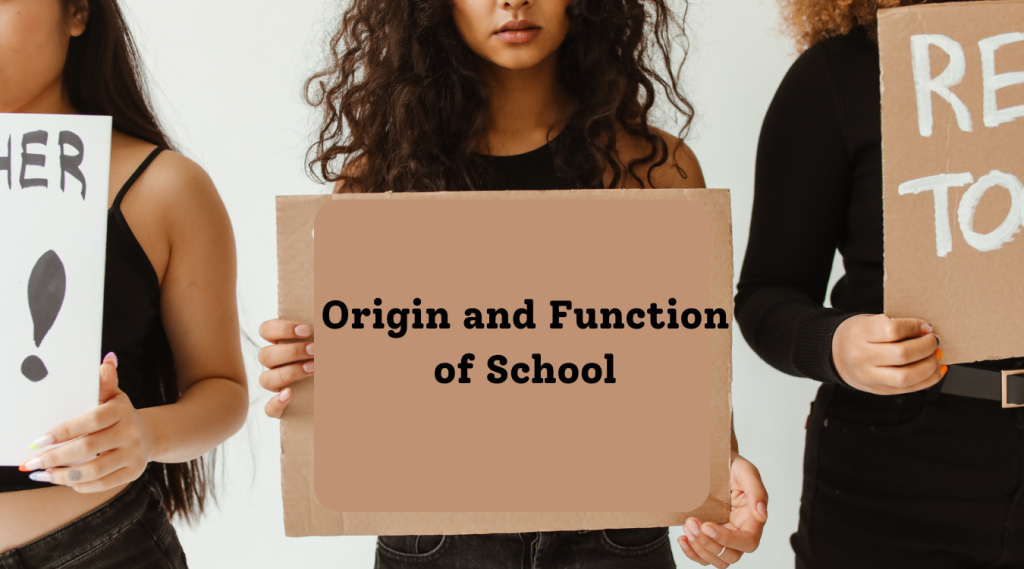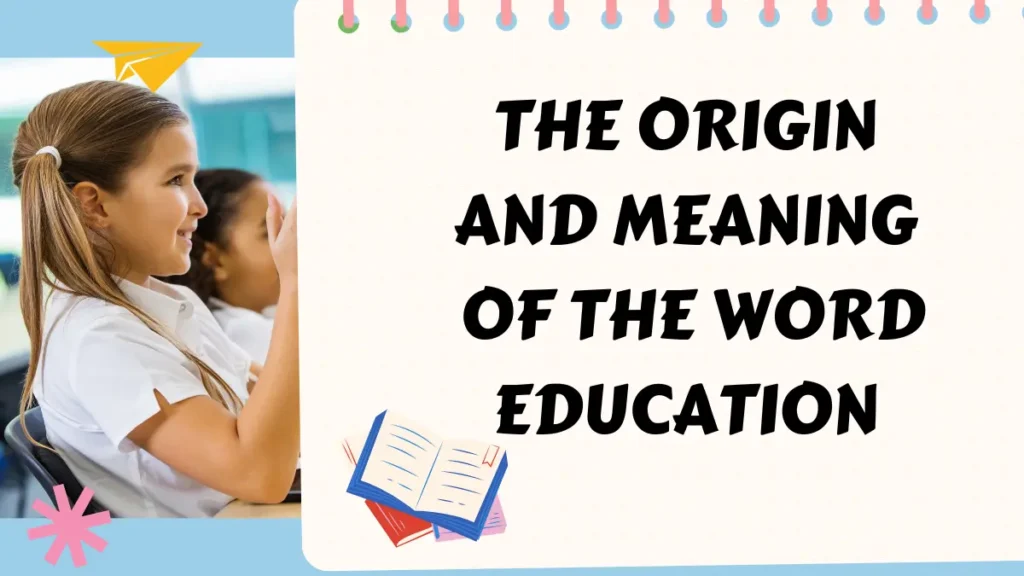The origin of school dates back to ancient times, when education was imparted to children by elders or scholars in informal settings. The function of a school is to provide a structured and formal environment where students can acquire knowledge, skills, and values that help them in their personal and professional lives.
Schools offer a broad range of subjects, extracurricular activities, and practical training to prepare students for their futures. Schools also play a crucial role in the socialization of students, where they learn to interact with others and develop healthy relationships.
In this article, we will explore the origin and function of schools in depth.
The Evolution of Schooling
Education has been a prominent feature of civilization throughout history. What started as simple lessons on hunting and gathering have evolved into complex academic institutions designed to impart a wide range of skills and knowledge. In this section, we will examine the evolution of schooling.
Brief History of Education
The history of education is a vast and complex one, having its roots deep in early human history. Here are some key points about the history of education:
- The first form of education was oral, where stories were passed down from generation to generation
- In ancient societies, education was only available to the elite, such as priests, royalty, and nobility
- The establishment of schools first occurred in ancient Greece, where education became available to the masses
- The Roman Empire inherited the Greek education system and brought it to the masses through the expansion of the empire
How Early Education Was Practiced
Early education was primarily focused on practical knowledge, such as farming, hunting, and survival skills. Here are some key points about early education:
- In hunter-gatherer societies, education was focused on survival skills, such as hunting, gathering, and making tools
- In agricultural societies, education was focused on farming and agricultural practices
- In ancient Greece, education was focused on a broad range of skills, including reading, writing, rhetoric, music, and athletics
- In the medieval period, education was focused on Latin, theology, and law, primarily for the clergy and nobility
Introduction To Modern Education System

The modern education system has undergone significant changes in recent times, driven by advances in technology and changes in societal and economic structures. Here are some key points about modern education:
- The modern education system is based on a standardized model, where the curriculum is the same for all students
- Education is now compulsory and free in most countries
- Universal literacy is an important goal of modern education
- Distance learning is becoming an increasingly popular mode of education, with the advent of online courses and degree programs.
The Purpose of School
Schools have been around for centuries, and their primary purpose has evolved over time. In modern society, there are several reasons why children attend school. Some of these reasons include:
- Acquiring formal education and knowledge
- Developing social skills and communication
- Enhancing creativity and critical thinking
- Building life skills and character traits
- Preparing for the workforce
Each of these reasons is essential for a holistic education. Students learn various subjects such as math, science, languages, and humanities to gain knowledge that will help them in their lives.
Schools also provide opportunities for students to participate in extracurricular activities, meet new people from different backgrounds, and refine their communication and social skills.
The development of creativity and critical thinking is essential as it helps students learn how to think critically, solve problems, and express themselves creatively. Schools also teach life skills and character-building values such as discipline, hard work, and respect, which students can carry with them throughout their lives.
Lastly, schools help prepare students for their future by allowing them to explore their interests, exposing them to various careers, and equipping them with skills and knowledge that would help them succeed in their chosen field.
How Education Systems Vary in Different Parts Of The World

Education systems vary significantly across the world. Some countries prioritize STEM subjects, while others focus more on liberal arts. For instance:
- In countries such as China and Singapore, there is a heavy emphasis on math and science, as these subjects are deemed to be important for economic growth.
- In Finland, students have shorter school days and less homework, and there’s more emphasis on play and creativity.
- In South Korea and Japan, schools place great importance on exams, and students often attend after-school classes known as “cram schools.”
- In France, the focus is on developing analytical and critical thinking skills, especially in the areas of philosophy and literature.
It is essential to understand that each country’s education system is designed to meet its unique needs, societal values, and workforce requirements. Therefore, it is crucial to learn about these differences and appreciate the diversity in global education.
The Role of Education In Society
Education has a significant role to play in society. It helps to:
- Develop a skilled workforce, which is essential for economic growth and prosperity.
- Elevate social mobility by providing fair and equal opportunities for education.
- Create informed and responsible citizens who can make a positive contribution to society.
- Foster cultural awareness and understanding.
Education is an essential tool in breaking the cycle of poverty, reducing income inequality, and promoting individual and societal well-being. It is the foundation upon which many of life’s achievements are built.
Therefore, it’s imperative to strive for a high-quality, accessible education system that meets the diverse needs of its learners.
The Challenges of Modern Schooling
Education has always been considered the backbone of every society, and schooling is one of the most fundamental components of education. However, modern schooling has its fair share of challenges that it faces.
Comparison Of Traditional and Modern Education Systems
The traditional education system had a more rigid structure, with the focus being mainly on bookish knowledge and theoretical concepts. The modern education system, on the other hand, is more flexible, with a focus on practical knowledge. Here are some key points to compare both systems:
- The traditional education system focuses on memorization, while the modern education system emphasizes critical and analytical thinking skills.
- In the traditional education system, teachers played a dominant role, while the modern education system is more learner-centric.
- The traditional education system typically had a one-size-fits-all approach, while the modern education system is more individualistic.
Negative Impact of Modernization on the Education System
While modern education has brought positive changes, it has also brought some adverse effects. Here are some ways in which modernization has had a negative influence on education:
- Technological advancements have led to a decrease in physical activities and reduced attention span among students.
- With the focus shifting towards practical knowledge, theoretical concepts are often ignored.
- The emphasis on individualism has led to increased competition and pressure to perform better.
- The lack of uniformity in modern education has led to inequality in the distribution of resources and opportunities.
How Modern Schools Can Overcome These Challenges

While modern schooling has its challenges, there are several ways to overcome them. Here are some suggestions:
- Incorporating physical activities such as sports and yoga into the curriculum can increase the attention span among students.
- Balancing practical knowledge and theoretical concepts can increase the overall understanding of a subject.
- Encouraging collaboration and group learning can help reduce the pressure of competition.
- Uniformity can be maintained by implementing a standard curriculum across all schools.
While modern schooling has its challenges, careful planning and implementation can overcome them.
Frequently Asked Questions
What Is the Origin of Schools?
Schools have been around since ancient times in several cultures, including Greece and China.
What Is the Purpose of Schools?
Schools provide knowledge, skills, and socialization for students to become productive members of society.
How Has the Function of Schools Changed Over Time?
Schools have evolved to include more subjects, technology, and educational opportunities for a wider variety of students.
Conclusion The origin and function of school can be traced back centuries ago when education was not a common privilege. However, with time, schools evolved to become more than just academic institutions. They became safe havens for children to learn, grow, and develop emotionally and socially. Schools played a significant role in the development and preservation of cultures and values. In modern times, schools have become crucial in shaping future leaders and innovators.
They equip students with the necessary skills and knowledge to thrive in a rapidly changing world. The educational system is constantly adapting to meet the needs and demands of society. As a result, schools are constantly evolving to ensure that students receive quality education that comes with the necessary skills to excel. Thus, schools remain an essential part of our society and play a critical role in moulding the future of our world.


